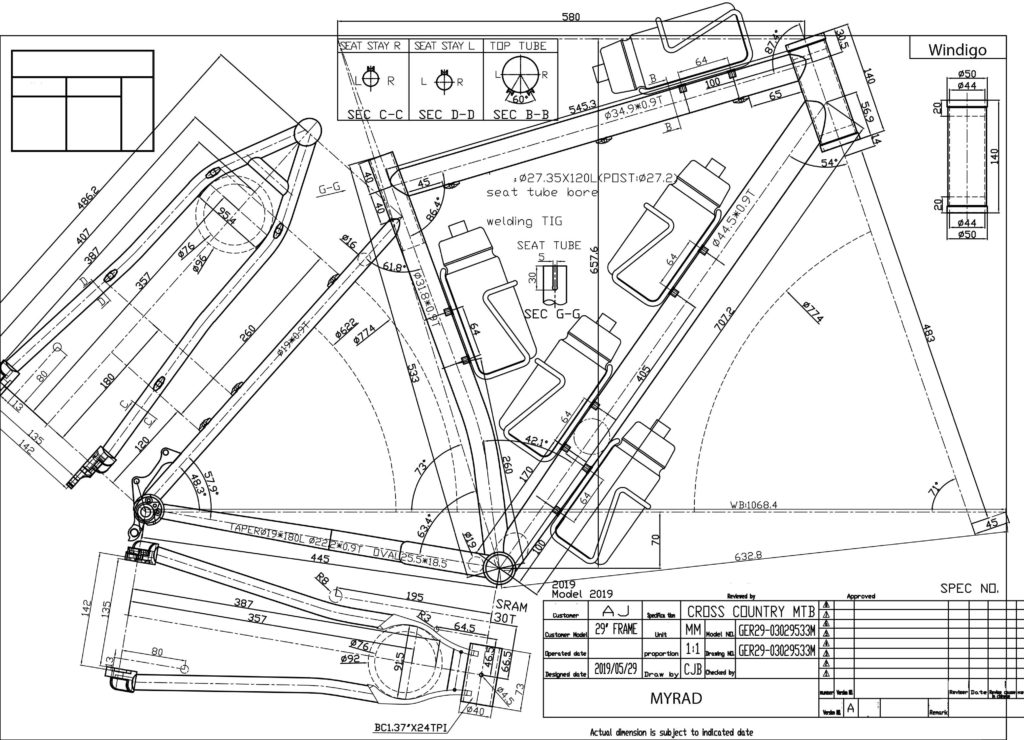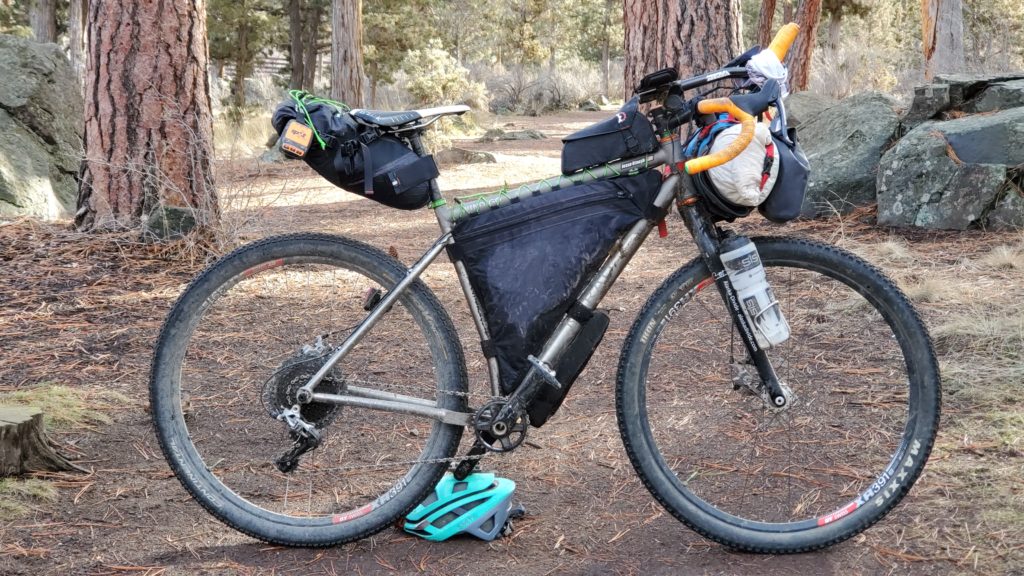The Bike
My gear loadout is really similar to what I took to Iberica Traversa, with a few changes to decrease weight and bulk, and to increase usability. The biggest change is the bike.
For Atlas Mountain Race, I’ll be riding a Myrad Windigo custom-geometry rigid dropbar mountain bike. I designed this bike with my friend, Alex Jacobson, who owns Germany-based Myrad Frameworks. Myrad specializes in ultra-endurance-specific titanium bike frames. Alex knows his stuff; he is an awesome athlete and recently had a fantastic result at Transcontinental on a road bike of his design. He finished seventh at TCR and will be racing Atlas Mountain Race as well (and likely finishing days ahead of me!). Collaborating on the design of a bike was a new experience for me, and I really loved seeing it go from a napkin sketch to a scaled drawing to a raw frame on my front porch.
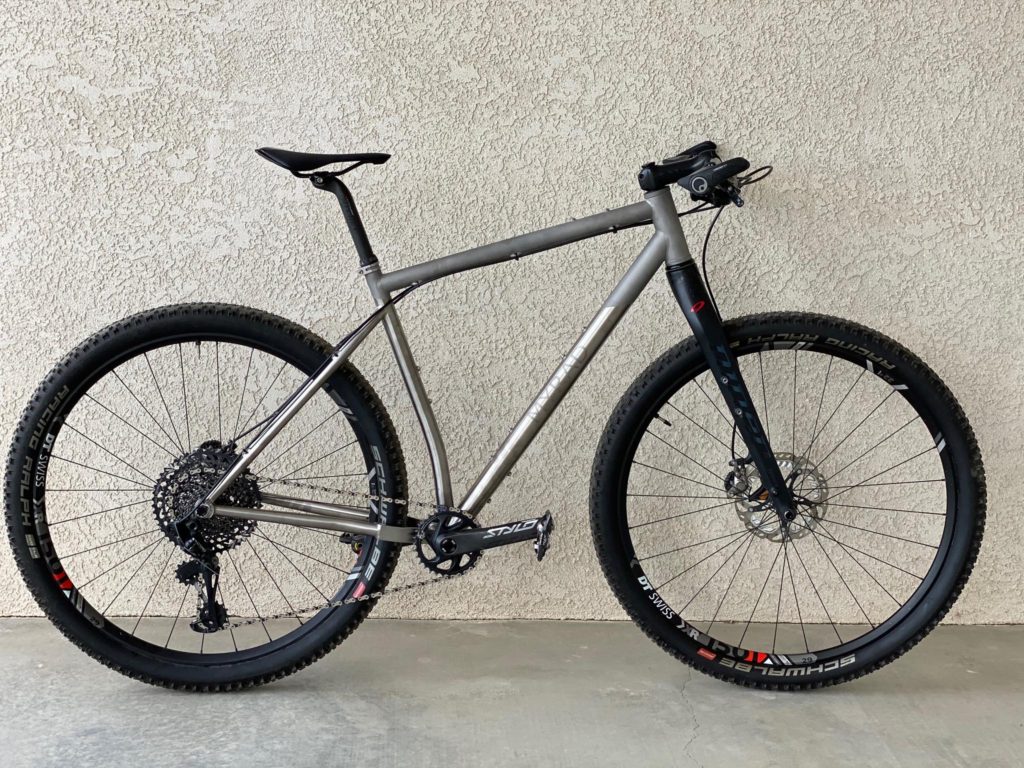
The Windigo is very similar in geometry to the Salsa Cutthroat I rode previously. I’m VERY happy to be on a titanium rig for AMR; the carbon Cutthroat was fast and light but dragging a carbon bike under trees and off of cliffs left some rather scary marks on the frame. Ultimately, I think titanium lends itself to ultra-endurance mountain bike racing better than any other material, but that is just my opinion. I feel more confident on the Windigo, and I go faster on descents than I would have on the Cutthroat.
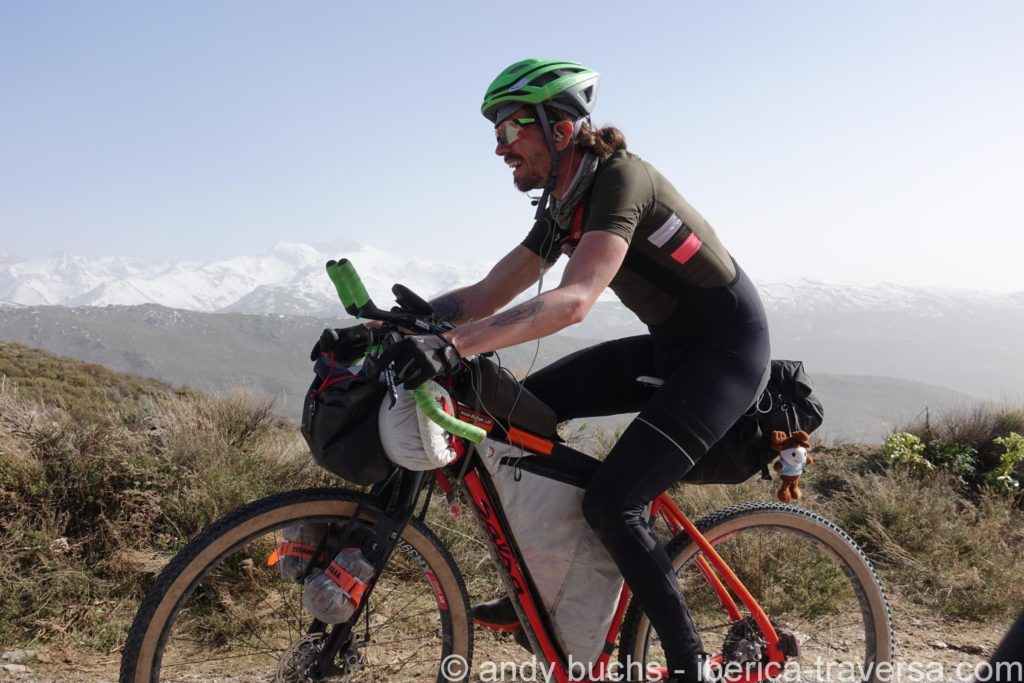
My gearing is 1×11-Speed SRAM Rival with a 34T chainring up front and an e*thirteen 9-46t cassette in the rear. This gives me a massive range, with 109 gear inches in the 9t cog and 21 gear inches in the 46. In Spain, I used a 32T chainring, with the same cassette, and felt like I could have used more top-end for the flats, pavement, and descents. Gearing is super personal, but this works for me. The 9-tooth cog feels a little weird when I’m hammering, but I can’t really describe it better than it doesn’t feel ‘round’ the way the other cogs do. The steps in the cassette are well-spaced and I’ve been really happy with the e*thirteen cassette during training and at SRMRno1, Iberica Traversa, and OR24MTB.
I use mechanical disc brakes, mostly for field serviceability. Most of my races are international (for now) and as a result they require a fair amount of flying. I don’t like worrying about bleeding brakes in the field or in an AirBNB before a race, and I’m perfectly happy with the Hayes CX Expert brakes I’ve run on my last three builds. The pads last a long time and the braking power is great. At Iberica Traversa, I ended up swapping out my pads after ~850 miles, but the pads were at about 50% when I started the race and probably had a fair amount of life left in them. I’ll be bringing a pair of pads to Morocco but I doubt I’ll need them.
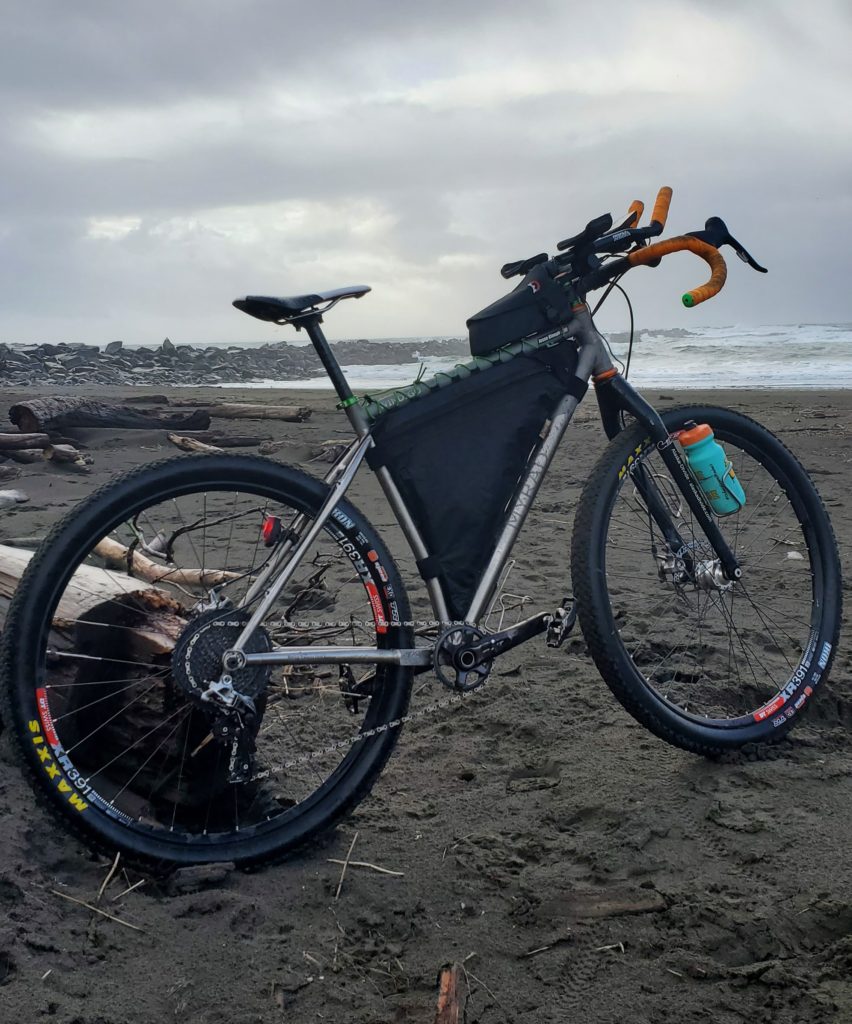
I’ll be running DT Swiss XR391 rims, same as at SRMRno1 and IT. The rims are laced to a DT Swiss 350 rear hub and a Shutter Precision PD-8x dynamo hub up front. I’ve been happy with the SP hub to keep my battery packs topped up and to power my Wahoo Roam. Tires are trusty ol’ Maxxis Ikons in 2.2” width and with CushCore installed. I had a set of Continental Race King Protection for testing over the last few months, but they didn’t work well for me. They developed hundreds of pinholes and wouldn’t seal, so I was constantly losing air and having to pump the tires back up. I know tons of people that use the RaceKings and are happy with them, so I assume I just got a bad pair. I’m stoked on the CushCore but this is my first race with them so I’m holding out final judgment. (Full disclosure: CushCore is a sponsor of Northwest Competitive Adventure).
The dynamo-powered headlight I’ve been using for a couple of years is a Sinewave Beacon. It’s the magic puzzle piece that acts as an inverter to charge devices via USB AND it’s a great headlight. I can power the lamp using one of the battery banks I carry, should I be traveling too slowly to get enough power from the dynamo, and I can switch between charge priority, light priority, and charge only modes with the flip of a switch.
My cockpit is fitted with a Salsa Guide stem, Salsa Cowchipper flared drop bars, and Profile Designs t3+ clip-on carbon aerobars attached to a Fred Bar. Between the aerobars, I have mounted the Sinewave Beacon and my Wahoo Roam bike computer. My saddle is a Fizik Antares road saddle and I use a Whisky carbon seatpost. Pedals are XTR Trail pedals. I really like the large platform of the Trail pedals, especially when my shoes are full of mud or snow and clipping in becomes impossible.
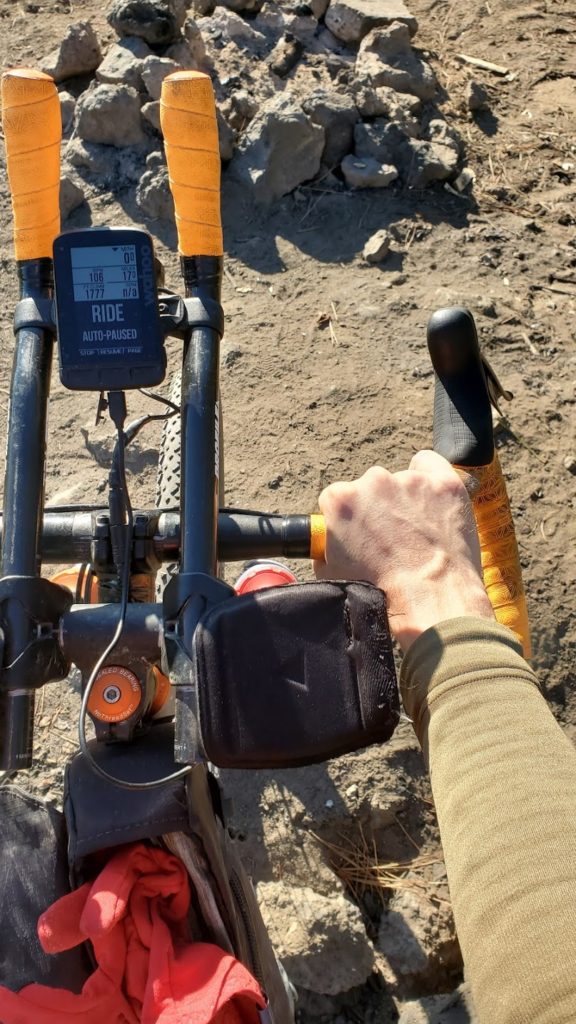
Overall I think my bike is a good example of a ‘moderate budget’ bikepacking bike that balances reliability and versatility well. It has mostly mid-range components that are field serviceable and are readily available. Sure, there are expensive bits, like that beautiful Matte Mango Chris King headset. A mid-range groupset, mechanical brakes, alloy handlebars & wheelset, and a reliable XT bottom bracket all round out the more affordable end of things. The expensive parts, including the cassette, headset, and dynamo light are examples of where saving a bit of money sacrifices more quality/reliability than I’m willing to give up.
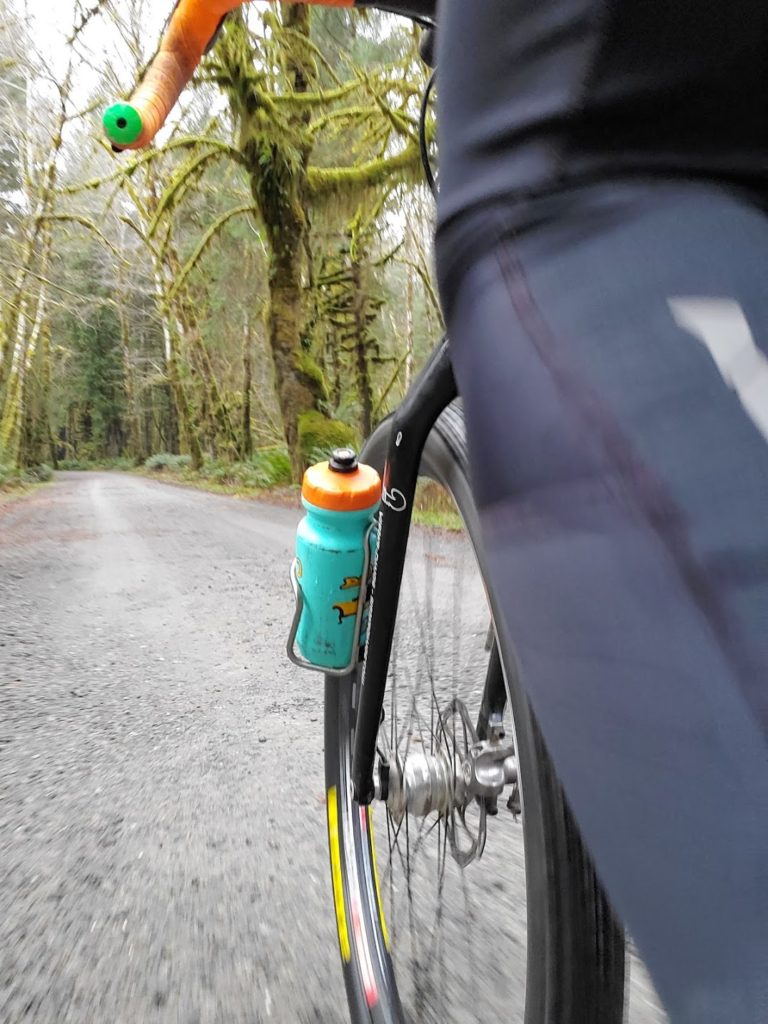
I’d love to hear any thoughts you might have on the frame, gearing, wheels, etc. And I’m open to answering questions or getting super nerdy on the gear inch ranges, chainstay length, and aerodynamic positioning if that’s your thing.
